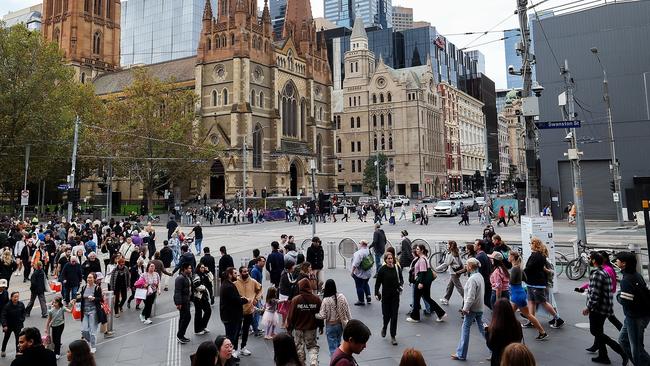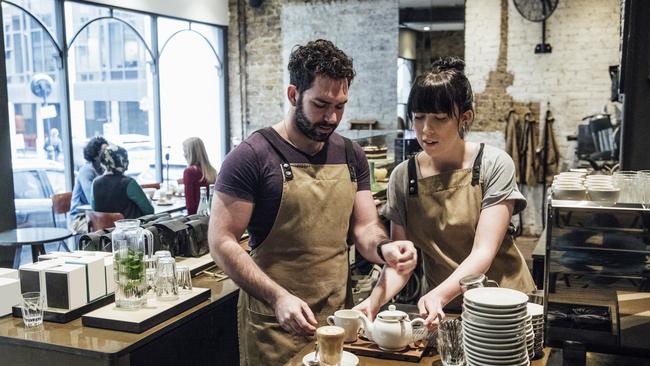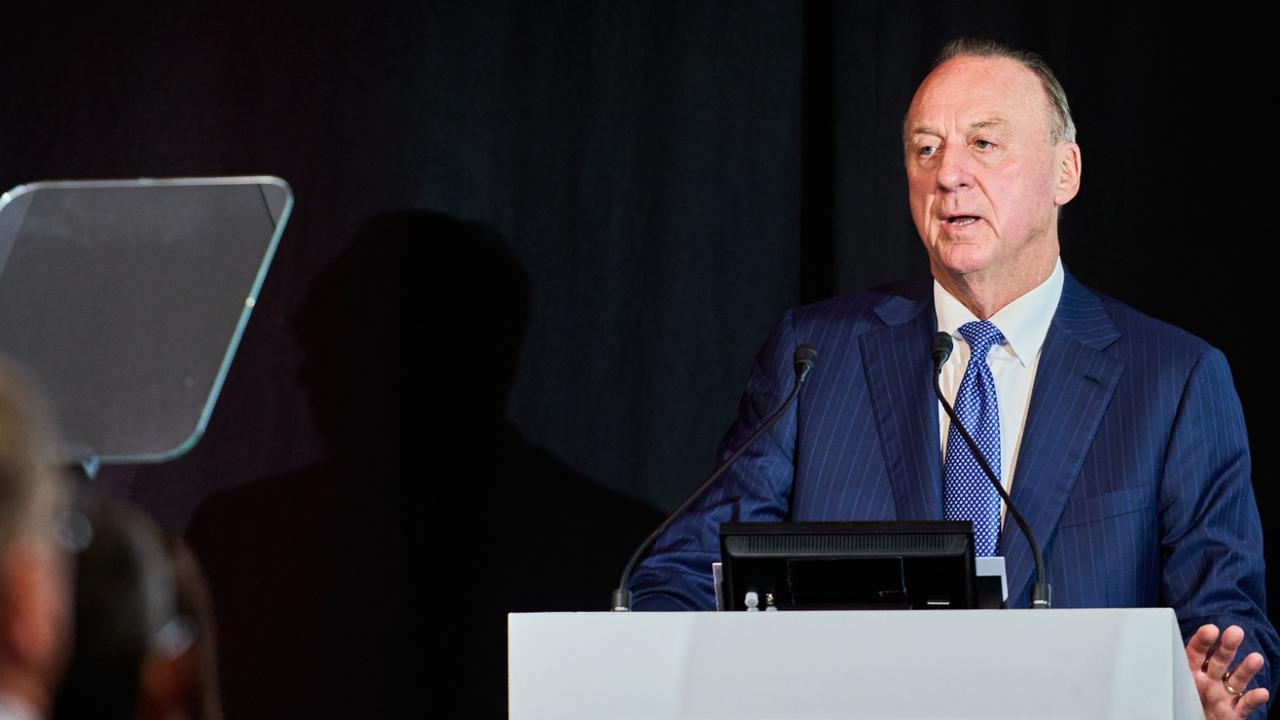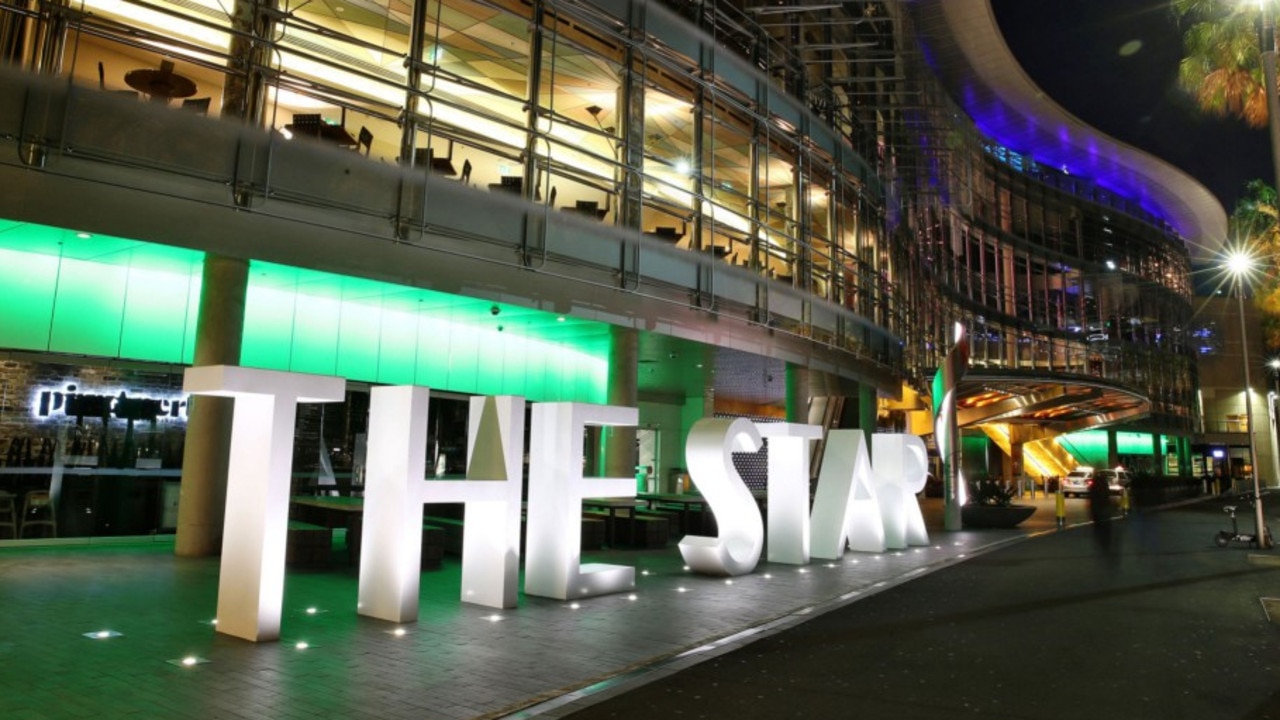Melbourne has the tightest retail vacancy market while Perth and Brisbane the most space
Office workers and international students returning to the city has sparked the third consecutive fall in retail vacancy across Australia’s major CBDs.

Business
Don't miss out on the headlines from Business. Followed categories will be added to My News.
Retail vacancy across Australia's major CBDs tightened to its lowest level since 2021 as office workers returned to the city leading to more foot traffic and greater demand from occupiers.
CBRE’s Australian CBD Retail Vacancy H2 found Brisbane and Perth CBDs continued to be the softest markets while Melbourne remained the tightest across the five surveyed capital cities.
The report showed Australia’s total retail CBD vacancy fell 80 basis points 11.3 per cent in H2 2024.
Melbourne’s retail vacancy reduced 85bp compared to the first half of 2024 while Perth had the highest vacancy rate in the country at 22 per cent, despite recording the largest reduction of 285bp. Brisbane’s vacancy decreased by 68bp to 18.5 per cent.
The Sydney CBD tightened by 29bp, with vacancy now sitting at 7.1 per cent and Adelaide’s vacancy improved by 105bp in H2 2024 to sit at 7.7 per cent.
CBRE’s Head of Retail Research Kate Bailey said overall, vacancy has tightened to the lowest level nationally since CBRE began this research series in H1 2021.
“The increase in workers returning to the office coupled with increased tourism and international student inflows, has led to more foot traffic in CBDs which has fuelled occupier appetite for floor space,” she said.
Melbourne’s recorded its third consecutive decrease in retail vacancy.
Vacancy across arcades and centres saw notable declines in H2 2024, dropping to 10.1 per cent (250bp) and 2.8 per cent (127bp) respectively. While strip retail locations recorded a slight increase, up 30bp to 7.2 per cent in the past six months.
Food & beverage and fashion retailers continue to dominate Melbourne’s CBD, collectively accounting for about 52 per cent of the surveyed areas in H2 2024.
CBRE Victoria director of retail leasing Jason Orenbuch said landlords were actively invest in their existing assets.
“This focus on upgrading and revitalisation is expected to deliver positive outcomes as significant retail development projects near completion later this year,” he said.
“As a result, we expect to see tenants in the CBD become more proactive in their leasing decisions and push vacancy down even further.”

The tightening of Brisbane’s CBD retail vacancy could be attributed to an overall increase in CBD visitation – with office occupancy growing from 78 per cent to 88 per cent – as well as an increase in tenant demand for flagship stores in prime locations in the CBD.
Strip vacancy decreased by 217bp to 14 per cent as high demand for flagship stores in prime locations continued to hold. Arcade vacancy tightened by 357bp to 28.3 per cent.
CBRE Queensland senior director of retail leasing Andrew Woodgate said the CBD’s retail sector continues to benefit from a gradual return to office assisted by the cut to public transport fares and the completion of major projects, like the Kangaroo Point Bridge and Queens Wharf, which are driving increased visitation.
“We expect to see this momentum continue in the medium to long term with major
redevelopments including the completion of the new Albert Street train station, Waterfront Brisbane and Howard Smith Wharves, set to revitalise key areas of the CBD,” he said.
Sydney CBD retail vacancy had the third consecutive half-yearly contraction since H1 2023.
CBRE’s NSW director – retail occupier Sam Embling said demand for core strip locations the Sydney CBD remain strong as occupiers seek to promote brand awareness and push product sales.
“The strong performance of luxury brands and the arrival of new F & B entrants continue to strengthen Sydney’s CBD centres, driven by rising foot traffic and returning office workers,” he said.
“The arrival of the Metro has significantly boosted foot traffic in the Sydney CBD, particularly around key retail hubs like Martin Place, transforming the area into a high-traffic destination.
“This has driven demand from high-profile retailers, including luxury brands and specialty stores looking to capitalise on the increased activity.”
Originally published as Melbourne has the tightest retail vacancy market while Perth and Brisbane the most space



